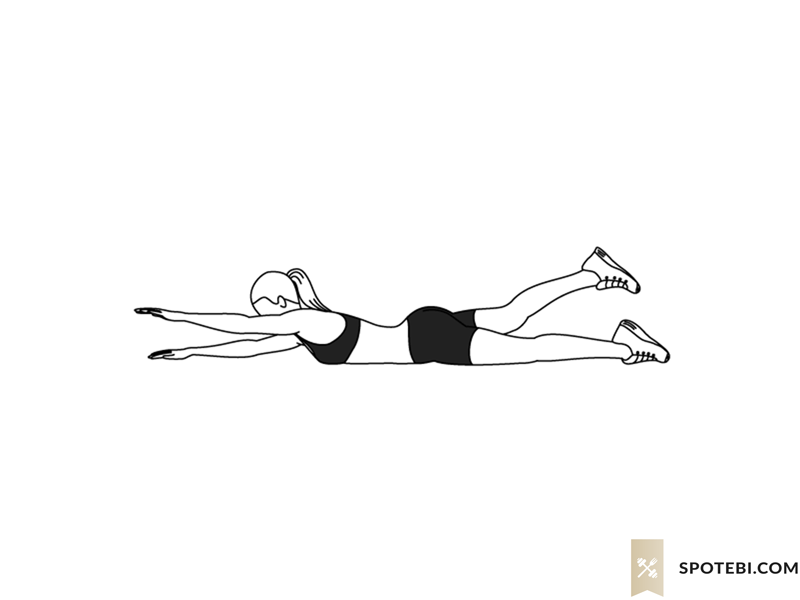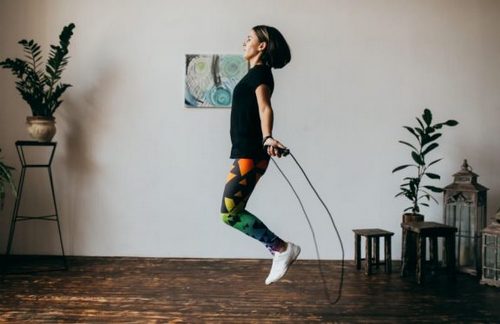Since working from home has become the norm in this season of partial lockdown, you may have had to work for long hours at a desk, on the bed, at the dining table, or on a couch in recent times. Some of my friends, and my patients alike, who are working from home, have complained of body weakness and/or back pains or general body pains in our casual interactions. Those complaints are merely some of the mild effects of inactivity. On a more serious note, sitting or lying for prolonged periods is actually not good for the immune system.
According to scientific research, regular exercising is a major factor in boosting the immune system. How does regular exercise boost the immune system? Exercise boosts the production of immune system cells in the body. These cells, some of which are called macrophages, are white blood cells and act as the soldiers of the body. They act as defenders and attack invaders like viruses and bacteria that can cause some of the respiratory tract infections.
Physical exercise increases the circulation of many immune system cells like the macrophages, which help fend off viruses and harmful bacteria. Hence, clear evidence that regular exercise lowers your risk of viral and bacterial infections. (Frontiers in Immunology, April 2018).
Exercises you can do at home to boost your immune system, with little to no space and equipment
- Aerobic or “Cardio” exercise
- Core strengthening exercise
If you’re new to exercise, it’s a good idea to discuss plans with your physiotherapist. Start slow, and keep your repetitions and sets short to begin with. You can always increase as your fitness improves. It is recommended that we have at least 150 minutes of these moderate- intensity exercises per week.
Aerobic exercises cause increased beating of your heart and sweating of your body. It helps keep the whole body in shape by improving heart and muscle endurance. Improved blood circulation and muscle strength and flexibility are added benefits of aerobic exercises.
Brisk walking: This can be done around your house. Walk at a moderate pace, and increase it after 5 minutes to make it brisk. Count number of rounds you can do before fatigue sets in. Also, check the time. Try to up this record after every 3 days by increasing the number by one or two rounds.
Jogging in place: Contrary to what you may believe, jogging can be done at home. All you need is a small space and your motivation. Begin with slow jogging for 5 minutes to warm up. Then increase speed to a steady moderate pace that gets your heart pumping. Swing your arms as you jog. Lift your knees higher to increase your heart rate. Increasing the speed will also increase the intensity of the workout.
Skipping rope: All you need is a rope and a proper area for skipping at home. To find the rope with the right length, step on the middle of the rope and stretch the handles toward your arm pits. The rope should stop right before the handles reach your arm pits. If it reaches higher than that, your rope is too long and the skipping will be awkward.
If it’s shorter than that, you might end up tripping regularly. Skip 5-10 minutes at first. If you get out of breath, take breaks in between and jog slowly in place. Then go back to skipping. As your body gets used to the workout, increase the skipping time until you get fatigued.
Try doing interval skipping by skipping as fast as you can for one minute, then slowing down and skipping at a milder pace for the next two to three minutes, then back to fast skipping.
Jumping jacks: Begin by standing with your legs straight and your arms to your sides. Jump up and spread your feet beyond hip-width apart while bringing your arms above your head, nearly touching. Jump again, lowering your arms and bringing your legs together. Return to your starting position. Repeat 10 times, rest and repeat 3 or more sets.
Dancing: This can be an enjoyable way to boost the immune system for people of all ages and sizes. There are many forms of dance, from hip hop dancing to traditional dancing. If you don’t know some moves already, sit and watch videos of dance work-out moves first. Cool down after a dance session and include stretching
Running the stairs: Run up quickly using each step. Pump your arms next to your sides as you move quickly. Descend carefully. Repeat till you need to get some rest. If you don’t have a long flight of stairs or if you only have a step or two at home, step up, step down the step, alternating the leading leg after a set of 10 repetitions. Repeat 3 sets of 10 each leg.
Core exercises
These prevent and manage back pain, when used correctly. The core exercises can help to strengthen the postural muscles such that they hold the spine in the correct alignment. Regular core exercising can drastically reduce your back pain or possibility of developing pain.
Bridging: Lie on your back. Bend your knees so that your feet are flat on the ground. Next, raise your waist up from the ground. Hold up for 7-10 seconds. Lower it back down to the ground and repeat. Carry out two sets of 10 repetitions.

Cat and camel: Go on all fours as if in a position to crawl. Arch your back upwards, and then slowly arch it downwards. Repeat 2 sets of 10 repetitions.

Planks: Lie on the floor and rest on your forearms on the floor with your elbows directly underneath your shoulders and hands facing forward so that your arms are parallel. Your body is also supported by your toes.
You can make it easier by resting on your knees, or harder by extending your arms so you’re supported by your hands. Try to keep your lower back straight. Make sure you are not dropping your hips or raising your butt high up.
Hold this position aiming for 30 seconds and then release and repeat 5 times. Increase hold time by 5 seconds more every 3 days and build up to 60 seconds hold time.

Alternate Superman exercise: Lie face down on an exercise mat. Raise your hand out straight ahead of you a few inches off the ground. Raise the opposite leg at the same time, a few inches off the ground.
Hold for 5 seconds. Release and repeat on other hand and leg. Repeat exercise 10 times for each side. Do 2 sets of 10 repetitions.

Flutter kicks: Lie on your back and firmly raise one straight leg about 5 inches off the floor and gently lower it back to almost touch the ground as you raise the other leg up about 5 inches off the floor. Count 10, rest 10 seconds then repeat 3 sets of 10 repetitions.

Boost your immune system by exercising regularly and come out of this lock down period stronger and better. Consult a physiotherapist if you have any back pain.
The writer, Geetha Opata, is a professional physiotherapist at the Accra Physiotherapy and Sports Injury Clinic. She specialises in conditions such as back pain, neck pain, joint pain and stiffness, spinal injuries, sports injuries, arthritis, stroke and Parkinson's disease.
Email: physiochatghana@yahoo.com
Latest Stories
-
Dr Nduom hopeful defunct GN bank will be restored under Mahama administration
17 minutes -
Bridget Bonnie celebrates NDC Victory, champions hope for women and youth
25 minutes -
Shamima Muslim urges youth to lead Ghana’s renewal at 18Plus4NDC anniversary
1 hour -
Akufo-Addo condemns post-election violence, blames NDC
2 hours -
DAMC, Free Food Company, to distribute 10,000 packs of food to street kids
3 hours -
Kwame Boafo Akuffo: Court ruling on re-collation flawed
3 hours -
Samuel Yaw Adusei: The strategist behind NDC’s electoral security in Ashanti region
3 hours -
I’m confident posterity will judge my performance well – Akufo-Addo
3 hours -
Syria’s minorities seek security as country charts new future
4 hours -
Prof. Nana Aba Appiah Amfo re-appointed as Vice-Chancellor of the University of Ghana
4 hours -
German police probe market attack security and warnings
4 hours -
Grief and anger in Magdeburg after Christmas market attack
4 hours -
Baltasar Coin becomes first Ghanaian meme coin to hit DEX Screener at $100K market cap
5 hours -
EC blames re-collation of disputed results on widespread lawlessness by party supporters
5 hours -
Top 20 Ghanaian songs released in 2024
6 hours

